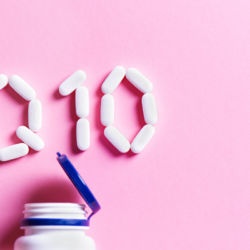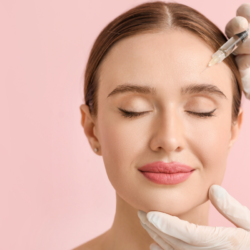Platelet-Rich Fibrin (PRF ) is revolutionising the field of dermatology and anti-ageing treatments. This innovative technique, derived from PRP (Platelet-Rich Plasma), is increasingly used to regenerate and revitalise the skin through the continuous release of growth factors. But what does PRF actually consist of and how does it act on the skin?
What is PRF?
PRF, or Platelet-Rich Fibrin, is an improved version of PRP (Platelet-Rich Plasma). While PRP requires the addition of an anticoagulant and releases a large quantity of growth factors as soon as it is activated, PRF allows these same factors to be released gradually, making it particularly effective for tissue regeneration.
This process is also distinguished by its absence of anticoagulants, which allows fibrin to form a three-dimensional network. This network serves as a matrix for platelets and leukocytes, slowly releasing essential growth factors such as VEGF (vascular endothelial growth factor), TGF-β1 (transforming growth factor-beta 1) and PDGF (platelet-derived growth factor) up to 14 days after injection.
PRF is generally classified into two broad categories:
- Solid (A-PRF, A-PRF and L-PRF)
- Liquid, or injectable (I-PRF and C-PRF)
These different forms of Platelet-Rich Fibrin are used according to specific treatment needs, whether for wrinkles, skin tightening or wound healing.
Protocols and methods for preparing PRF
The quality of Platelet-Rich Fibrin depends on the preparation method, particularly the centrifugation parameters. There are several protocols for preparing PRF:
- A-PRF (Advanced PRF ): This protocol is carried out at a speed of 200 g for 8 minutes, which produces a clot rich in platelets and leukocytes, essential for tissue regeneration.
- C-PRF (Concentrated PRF): This protocol, at 700 g for 8 minutes, is optimal for preparing liquid PRF that can be injected under the skin for anti-ageing treatments.
Centrifuges with a tilting bucket model or horizontal centrifugation are recommended for better separation of blood components, ensuring better quality PRF.
PRF applications in dermatology
FRP has many applications in dermatology, particularly in skin rejuvenation treatments. Among the most commonly treated areas are :
- The face, particularly for the treatment of wrinkles, nasolabial folds, acne scars and to improve skin elasticity.
- The neck and décolleté, for a firming effect.
- Hands, to reduce the visible signs of ageing.
Studies show that Platelet-Rich Fibrin injection, particularly in the form of I-PRF (injectable), stimulates collagen production and improves the overall quality of the skin, notably by increasing skin density and reducing imperfections.
What are the benefits of PRF for skin regeneration?
Here are the main effects observed when FRP is used in dermatology:
- Stimulation of fibroblasts: Fibroblasts, the cells responsible for collagen production, are strongly stimulated by the growth factors contained in FRP. This leads to an increase in collagen production, improving the skin’s firmness and elasticity.
- Reduced wrinkles and fine lines: Thanks to the regenerating effect of FRP, the skin becomes smoother and tighter, reducing the visible signs of ageing.
- Improved skin texture: Platelet-Rich Fibrin contributes to better hydration and toning of the skin, while improving its texture and radiance.
- Anti-inflammatory effect: The leukocytes present in PRF play a crucial role in reducing skin inflammation, particularly acne scars.
FRP is also showing promising results in treating chronic, hard-to-heal wounds, acting as a biological matrix that promotes healing and cell regeneration.
Risks and side effects
- Redness and oedema at the injection site.
- Slight pain or temporary sensitivity.
- Possible bruising, particularly in sensitive areas such as around the eyes.
These effects are generally mild and disappear within a few days. It is also advisable to avoid anti-inflammatory drugs for a fortnight after the procedure, as they may interfere with the healing process.
Contraindications include coagulation disorders, active infections or serious pathologies affecting the immune system. A preliminary examination of the patient is therefore essential before proceeding with FRP treatment.
Platelet-Rich Fibrin is undoubtedly one of the most promising advances in the field of regenerative dermatology. Thanks to its ability to slowly release growth factors, it enables effective regeneration of skin tissue, offering long-lasting results. Whether to improve skin texture, reduce wrinkles or treat scars, it is positioned as a natural and effective alternative to more invasive aesthetic treatments. However, further research is needed to refine protocols and further optimise results.
Sources
- Evaluation of the Effect of Platelet-Rich Fibrin Matrix in the Correction of Periorbital Wrinkles: An Experimental Clinical Trial
- Platelet-Rich Fibrin as an Effective Method of Skin Revitalization
- Platelet-Rich Fibrin, Preparation and Use in Dermatology





